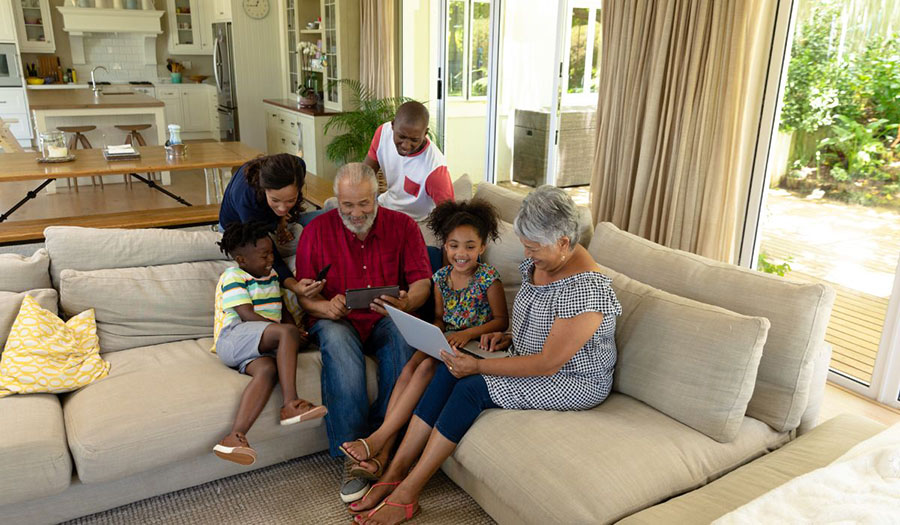With cost pressures, inflation and new affordability challenges, a notable trend has emerged, transforming the way people perceive and experience their living spaces. Co-living, once a niche concept, has now become a prominent force shaping the future of urban housing. In 2023, the rise of co-living spaces is a testament to the shifting dynamics of modern lifestyles, the surge in remote work trends, and an increasing desire for community. This article delves into the key factors driving the popularity of co-living arrangements, explores the impact of changing lifestyles, and analyzes the potential implications of innovative co-living projects on the traditional housing market.
Changing Lifestyles and Urban Dynamics
The traditional model of urban living, characterized by nuclear families in detached houses, is undergoing a significant transformation. The 21st century has witnessed a shift in lifestyle preferences, with an increasing number of individuals opting for flexibility, convenience, and a sense of community. The rise of co-living spaces can be attributed, in part, to these changing dynamics.
According to recent surveys, a growing number of urban dwellers prioritize experiences and connections over property ownership. Young professionals and millennials, in particular, are choosing co-living arrangements as a means to access affordable housing in prime urban locations while fostering a sense of belonging in a community-oriented environment.
Remote Work Trends and Co-Living
The global shift towards remote work, accelerated by the COVID-19 pandemic, has played a pivotal role in the rise of co-living spaces. As professionals increasingly embrace flexible work arrangements, the need for proximity to traditional office spaces has diminished. Co-living offers an attractive solution for remote workers, providing them with a dynamic environment that supports both productivity and social interaction.
Statistics indicate a significant increase in the number of remote workers, with a substantial portion expressing interest in co-living options that cater to their unique lifestyle. Co-living spaces, equipped with high-speed internet, shared workspaces, and communal areas, are becoming the preferred choice for those seeking a seamless integration of work and life.
The Desire for Community
In an era characterized by digital connectivity, paradoxically, there is a growing hunger for authentic, physical connections. Co-living spaces respond to this desire for community, offering residents a built-in social network. Shared common areas, communal events, and collaborative activities foster a sense of belonging that is often lacking in traditional housing setups.
Studies show that individuals residing in co-living spaces report higher levels of satisfaction with their living arrangements, citing the sense of camaraderie and mutual support as key factors. As the importance of social connections continues to be emphasized in mental health discussions, co-living spaces provide an antidote to the isolation prevalent in contemporary urban living.
Innovative Projects Redefining the Landscape
The surge in demand for co-living spaces has led to the development of innovative projects that challenge traditional housing norms. From modular micro-apartments to eco-friendly co-housing communities, architects and developers are reimagining urban living to cater to the evolving needs of residents.
Notable examples include vertical co-living towers that maximize space efficiency, repurposed industrial buildings transformed into vibrant residential communities, and eco-conscious co-living spaces designed with sustainability in mind. These projects not only address the demand for affordable and communal living but also have the potential to influence the broader urban development landscape.
Implications on the Traditional Housing Market
The rise of co-living spaces raises questions about the future of the traditional housing market. As co-living becomes a mainstream option, the demand for single-family homes may experience a shift. The real estate industry must adapt to accommodate this changing landscape, recognizing the appeal of co-living arrangements and incorporating elements of community-oriented design.
Furthermore, the potential economic impact of co-living on local neighborhoods and businesses should not be underestimated. Co-living spaces often revitalize underutilized urban areas, attracting a diverse demographic that contributes to the local economy. As these spaces continue to proliferate, urban planners and policymakers must consider their role in shaping vibrant, sustainable communities.
The rise of co-living spaces in 2023 is a multifaceted phenomenon fueled by changing lifestyles, remote work trends, affordability and the human need for genuine connections. As urban dwellers increasingly seek alternatives to traditional housing models, co-living has emerged as a viable and attractive option. The innovative projects shaping this trend not only redefine urban living but also have the potential to reshape the broader landscape of housing and community development. As we navigate the evolving dynamics of urban life, co-living stands as a compelling example of how architecture, technology, and societal shifts converge to create a new paradigm for the way we live and interact in our cities.





